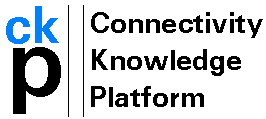
A Made IT project
http://www.made-it.com
info@made-it.com
 |
A Made IT projecthttp://www.made-it.com info@made-it.com |
The Open Systems Interconnect Reference Model is a seven layer model defined by the ISO (International Standards Organization) to create an interoperable network. The layers describe all functions of a network from the physical medium up to the application.
The idea of the ISO was to create separate layers independant of each other. This way it would be possible to use the best or most suitable layer from every protocol. This didn't succeed, but the OSI Reference Model is still the best way to describe a network.
| OSI Reference Model | |
|---|---|
| 7 | Application Layer |
| 6 | Presentation Layer |
| 5 | Session Layer |
| 4 | Transport Layer |
| 3 | Network Layer |
| 2 | Data Link Layer |
| 1 | Physical Layer |
The application layer contains all the management information for the distributed applications.
The data units here is the real user data. Active devices for internetworking are called gateways.
Note: This is not according to OSI which calls a gateway a device which is active on layer 3
The presentation layer is responsible for formating data in such way that it is ready for presentation to the application. This means translation of different character formats (ASCII/EBCDIC) is done here, but also text (de)compression, virtual terminal emulation and encryption/decryption. It is completely responsible for translation, formatting and the syntax selection.
The data units on this layer are called messages
The session layer is responsible for establishing, maintaining and termination of session between applications. The session layer establishes and sets and synchonizes the parameters for dialogues between two devices.
4 Transport LayerThe transport layer is responsible for a guaranteed delivery of data. It provides a reliable service, it takes care of the setup, maintenance and shutdown of vitrual circuits and it is responsible for fault detection, error recovery and flow control.
Data units on this layer are refered to as datagrams
The network layer is responsable for connectivity and path sellection between two end systems. By using the network layer it is possible to separate LANs into distinct networks. There is no guarantee of correct data delivery, since the network layer does not provide error correction.
The devices active on this layer are called routers and the data units are refered to as packets.
Note: There is a slight distinction with official OSI name for active devices on this layer. The OSI talks of gateways, but the OSI is probably the only one, we will refer to routers.
The data link layer is responsable for the physical addressing of the data. This means it's addressing is based on the true network interface card addresses, also known as MAC-addresses. The data link layer is also responsable for error notification, ordered delivery of frames and flow control.
The IEEE has split this layer up into MAC and LLC, and even added SNAP.
| 2 | Data Link Layer | LLC or LLC+SNAP |
| MAC |
The reason for this splitup is that the LLC, with or without SNAP, is identical for all networks and the MAC-layer is network specific. Ethernet and Tokenring have a different medium access control protocol (CSMA/CD and Tokenpassing) but the same LLC (IEEE 802.2)
It's on the MAC part of the data link layer where bridges are active. The data units related to this layer are called frames.
The physical layer is responsable for activating, maintaining and deactivating the physical link between to end stations. It defines electrical (voltage levels, timing and coding of voltage levels), mechanical (physical conntectors and cabling) and functional (data rates, max. transmission distances) specifications.
Devices active on this layer are called repeaters. The units transmitted are bits (1 or 0).